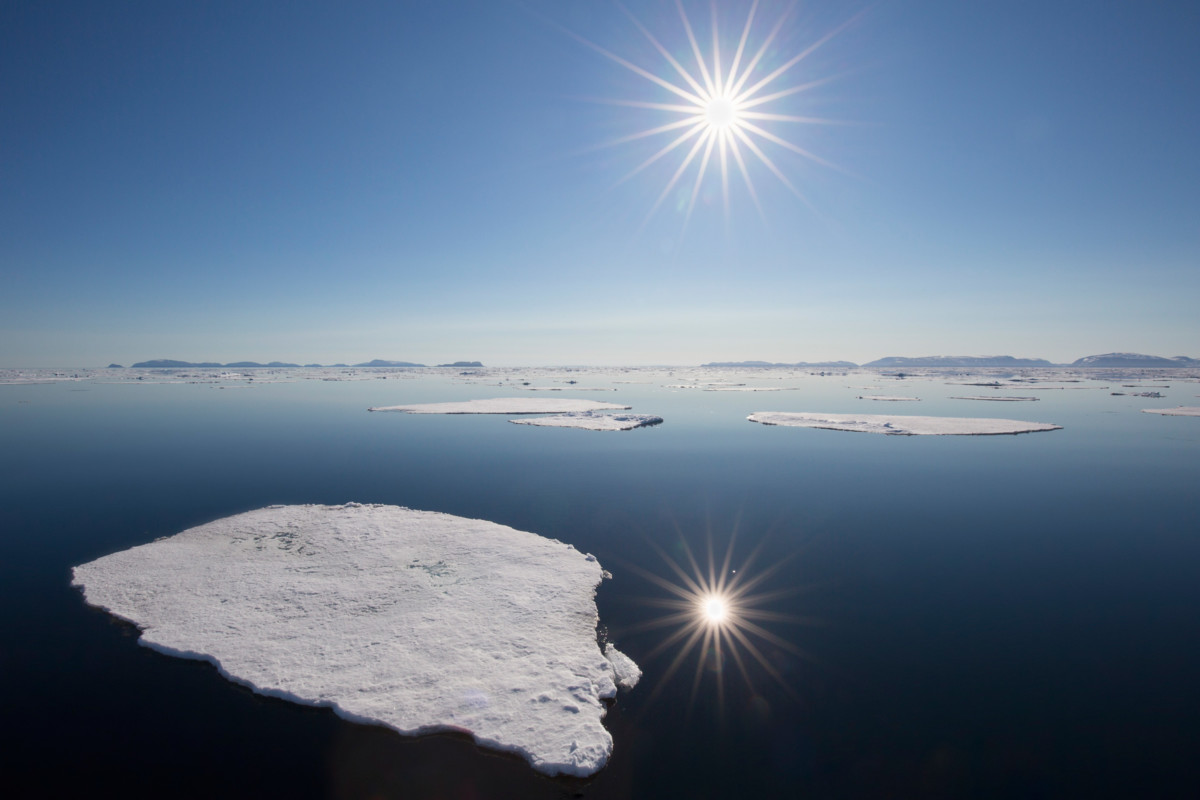How
Feedback Loops Are Driving Runaway Climate Change

Dahr
Jamail

1
October, 2018
If
you think this summer has been intense as far as record warm
temperatures, wildfires, drought, and flooding events around the
Northern Hemisphere, you haven’t seen anything yet — unless you
happen to live in the Arctic.
According
to the US National Oceanic and Atmospheric Administration (NOAA), air
temperatures there are increasing at an “unprecedented rate” —
twice as fast as they are around the rest of the globe. NOAA’s 2017
Arctic Report Card states
unequivocally that the Arctic “shows no sign of returning to
reliably frozen region of recent past decades.”
The Executive
Summary of the report also adds,
“Arctic paleo-reconstructions, which extend back millions of years,
indicate that the magnitude and pace of the 21st century sea-ice
decline and surface ocean warming is unprecedented in at least the
last 1,500 years and likely much longer.”
A recent
report from National Geographic revealed
that some of the ground in the Arctic is no longer freezing, even
during the winter. Along with causing other problems, this will
become yet another feedback loop in the Arctic, causing yet more
greenhouse gasses to be released from permafrost than are already
being released and impacting the entire planet.
The
simplest explanation for a positive climate feedback loop is this:
The more something happens, the more it happens. One of the most
well-known examples is the melting of sea ice in the Arctic during
the summer, which is accelerating. As greater amounts of Arctic
summer sea ice melt away, less sunlight is reflected back into space.
Hence, more light is absorbed into the ocean, which warms it and
causes more ice to melt, and on and on.
Dr.
Ira Leifer is an academic researcher who specializes in
bubble-related oceanographic processes (such as subsea bubble plumes
emanating from the ocean floor),
satellite remote sensing, and air pollution. Working closely with
NASA on some of his projects, Leifer uses the agency’s satellite
data to study methane in the Arctic and its role in climate
disruption.
One
of his concerns about a feedback loop already at play in the Arctic
is how the heating of that region is already being amplified by ocean
currents that transport warmer, more southerly waters northwards into
Arctic seabed waters where it can affect methane deposits in
submerged permafrost and sub-seabed methane hydrates.
“The
release of this methane contributes powerfully to overall warming –
methane is a very potent greenhouse gas, which actually has a bigger
effect [on] the atmosphere’s radiative balance than carbon dioxide
on decadal timescales,” Dr. Leifer told Truthout.
Dr.
Peter Wadhams is
a world-renowned expert who has been studying Arctic sea ice for
decades.
His
prognosis for the Arctic sea ice is grim: He says it is in its “death
spiral.”
“Multi-year
ice is now much less than 10 percent of the area of the ice cover; it
was 60 percent or more before 2000,” Dr. Wadhams told Truthout.
“[Sea ice] extent in summer is down to 50 percent of its value in
the 1980s.”
Dr.
Wadhams, who is also the President of the International Association
for the Physical Sciences of the Ocean (IAPSO), noted that this
primary feedback loop is much further along than most of us realize.
“I
see the summer sea ice disappearing by the early 2020s,” Wadhams
said. He noted that the change of albedo (a measure of reflection of
solar radiation) due to the loss of sea ice and snowline retreat
across the Arctic “is sufficient to add 50 percent to the warming
effect of CO2 emissions alone.”
Alarmingly,
on August 21, Arctic scientists told
The Guardian that
the oldest and strongest sea ice in the Arctic had broken up for the
first time in recorded history. One of them described the event as
“scary,”
in part because it occurred off the north coast of Greenland, which
is normally frozen year-round. The region has long been believed to
be “the last ice area”: It was thought, at least until now, to be
the final place that would hold out against the melting impacts from
an increasingly warmer planet.
To
read article GO
HERE



No comments:
Post a Comment
Note: only a member of this blog may post a comment.